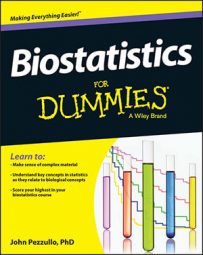Scientists conduct experiments on limited samples of subjects in order to draw conclusions that (they hope) are valid for a large population of people. Suppose you want to conduct an experiment to determine some quantity of interest. For example, you may have a scientific interest in one of these questions:
What is the average fasting blood glucose concentration in adults with diabetes?
What percent of children like chocolate?
How much does blood urea nitrogen (BUN) tend to increase (or decrease) with every additional year after age 60?
To get exact answers to questions like these, you'd have to examine every adult diabetic, or every child, or every person over age 60. But you can't examine every person in the population; you have to study a relatively small sample of subjects, in a clinical trial or a survey.
The numeric result that you get from your sample (such as average glucose, the percent of children who like chocolate, or the BUN increase per year) is called a sample statistic, and it's your best guess for the value of the corresponding population parameter, which is the true value of that average or percent or yearly increase in the entire population.
Because of random sampling fluctuations, the sample statistic you get from your study isn't exactly equal to the corresponding population parameter. Statisticians express this unavoidable discrepancy in terms of two concepts: accuracy and precision. To many people these two terms mean the same thing, but to a statistician they're very different.

